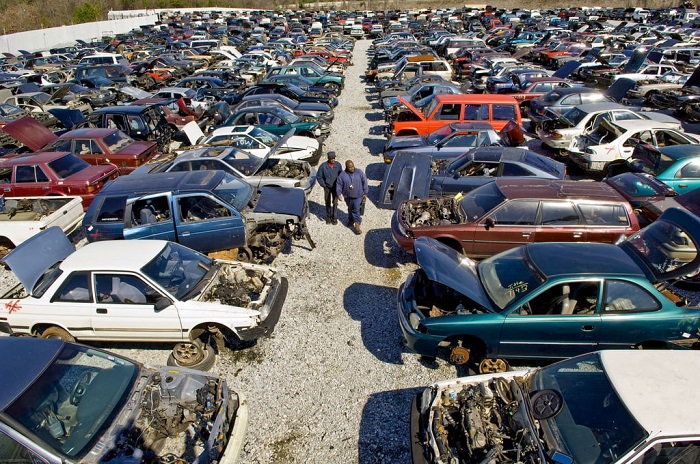In recent years, the global focus on reducing carbon emissions has intensified, driven by the urgent need to address climate change. Various sectors, including the automotive industry, play a significant role in this effort. While much attention is given to advancements in fuel efficiency, electric vehicles, and alternative energy sources, one critical aspect often overlooked is the role of salvage yards. These facilities, responsible for processing end-of-life vehicles, contribute substantially to the reduction of carbon emissions. By recycling and reusing automotive parts, salvage yards help minimise the environmental impact of vehicle production and disposal. This blog post explores the ways in which salvage yards contribute to reducing carbon emissions and their importance in the broader context of environmental sustainability.
Recycling and Reusing Automotive Parts
Salvage yards serve as the first line of defence in preventing automotive waste from ending up in landfills. When a vehicle reaches the end of its life, salvage yards carefully dismantle it, salvaging any usable parts. These parts can then be sold to consumers or businesses, reducing the need for new parts to be manufactured. The process of manufacturing new automotive parts is energy-intensive and contributes significantly to carbon emissions. By reusing parts from older vehicles, salvage yards reduce the demand for new production, thereby lowering the associated carbon footprint.
Additionally, the recycling of materials such as metal, plastic, and rubber from end-of-life vehicles further contributes to carbon emission reduction. The extraction and processing of raw materials for new parts require substantial amounts of energy and generate significant greenhouse gases. Salvage yards help mitigate this impact by ensuring that valuable materials are recycled and reintroduced into the production cycle. This circular approach not only conserves natural resources but also reduces the overall carbon emissions associated with vehicle production.
Reducing the Need for New Vehicle Production
The production of new vehicles is one of the largest contributors to carbon emissions in the automotive industry. From the extraction of raw materials to the assembly of vehicles, the entire process is energy-intensive and generates a significant amount of greenhouse gases. Salvage yards play a crucial role in reducing the demand for new vehicles by providing a steady supply of used parts. This availability of affordable, high-quality parts encourages vehicle owners to repair and maintain their existing vehicles rather than purchasing new ones.
Moreover, salvage yards like cash for unregistered cars Sydney help extend the lifespan of vehicles by making it economically viable for consumers to keep older vehicles on the road. The longer a vehicle remains in use, the lower the demand for new vehicle production, leading to a reduction in the overall carbon emissions generated by the automotive industry. This practice aligns with the principles of sustainability, where the focus is on maximising the use of existing resources and minimizing waste.
Safe Disposal of Hazardous Materials
End-of-life vehicles contain various hazardous materials, such as batteries, fluids, and certain types of plastics, which can be harmful to the environment if not disposed of properly. Salvage yards are equipped to handle these materials safely, ensuring that they are either recycled or disposed of in an environmentally responsible manner. This process is essential in preventing the release of toxic substances into the environment, which could contribute to pollution and, indirectly, to increased carbon emissions.
For example, the proper disposal of automotive fluids, such as oil and coolant, prevents them from contaminating water sources and soil. When these fluids are improperly disposed of, they can lead to environmental damage that requires energy-intensive remediation efforts, thereby contributing to carbon emissions. Salvage yards play a pivotal role in managing these hazardous materials, ensuring that they do not pose a threat to the environment and public health.
Also visit: https://cashforcarsnsw.com.au/cash-for-cars-kellyville/
Supporting the Circular Economy
Salvage yards are integral to the concept of the circular economy, which emphasises the continuous use of resources through recycling, reuse, and remanufacturing. In a circular economy, waste is minimised, and the lifecycle of products is extended, reducing the need for new resource extraction and production. Junk cars yards embody this principle by recovering valuable materials and parts from end-of-life vehicles, thereby reducing the overall carbon footprint of the automotive industry.
By supporting the circular economy, salvage yards help create a more sustainable and resilient system where resources are conserved, and environmental impact is minimised. This approach not only benefits the environment by reducing carbon emissions but also supports economic growth by creating jobs and fostering innovation in recycling and remanufacturing technologies.
The Future of Salvage Yards in Carbon Emission Reduction
As the automotive industry continues to evolve, with the rise of electric vehicles and advancements in manufacturing technologies, the role of salvage yards in reducing carbon emissions will become even more critical. Electric vehicles, while offering significant environmental benefits, present new challenges for salvage yards, particularly in the safe handling and recycling of batteries. However, with the right investments in technology and training, salvage yards can continue to contribute to carbon emission reduction by efficiently processing these new types of vehicles.
Furthermore, as consumer awareness of environmental issues grows, the demand for sustainable practices in the automotive industry is likely to increase. Salvage yards that adopt environmentally responsible practices and invest in new technologies will be well-positioned to meet this demand and continue playing a vital role in reducing carbon emissions.
Conclusion
Salvage yards are often overlooked in discussions about reducing carbon emissions, yet their contributions are substantial. By recycling and reusing automotive parts, reducing the need for new vehicle production, safely disposing of hazardous materials, and supporting the circular economy, salvage yards help mitigate the environmental impact of the automotive industry. As the industry evolves, the importance of salvage yards in reducing carbon emissions will only grow, making them an essential component of a sustainable future. Through continued investment in technology and environmentally responsible practices, salvage yards can play a crucial role in the global effort to combat climate change and protect our planet for future generations.
Read more blogs here.







